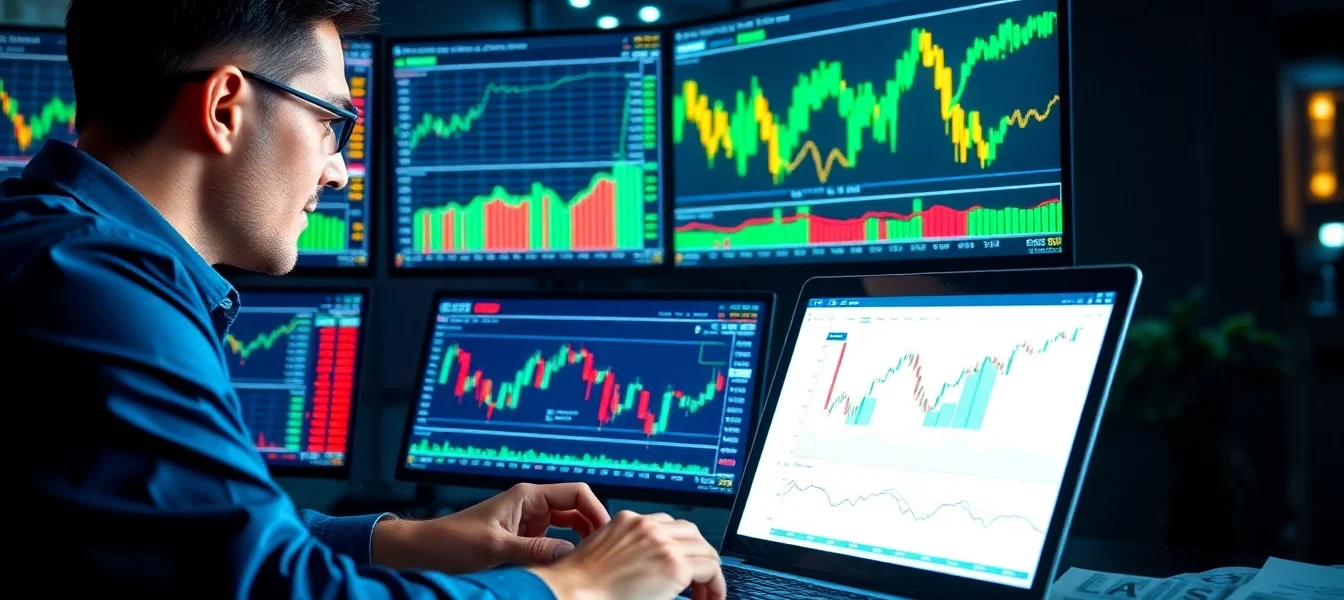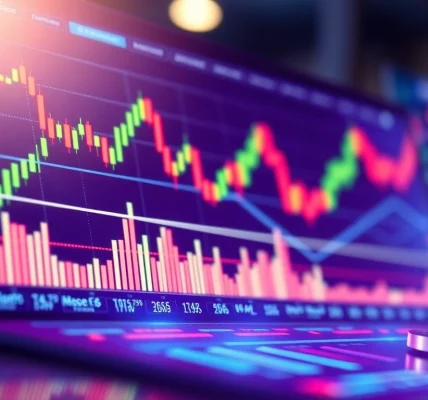The Ultimate Guide to Mastering CFD Trading: Strategies and Insights
Understanding CFD Trading: A Comprehensive Overview
Contract for Difference (CFD) trading is an innovative financial instrument that allows traders to speculate on the price movements of various underlying assets without actually owning them. By facilitating situations where traders can benefit from the rise or fall in asset prices, cfd trading has become a popular choice among market participants. This article provides an in-depth look at CFD trading, covering its fundamentals, advantages, risks, and strategies for successful trading.
What is CFD Trading and How Does it Work?
CFDs are derivative products that enable an individual to trade based on the price changes of underlying assets such as stocks, commodities, currencies, and indices. Essentially, a CFD is an agreement between a trader and a broker to exchange the difference between the opening and closing prices of an asset. The key appeal of CFD trading is the ability to operate without actually owning the underlying asset, allowing for greater liquidity and flexibility in trading strategies.
A buyer opens a CFD position by speculating that the price of a given asset will rise, while a seller anticipates falling prices. If a trader accurately forecasts how the market will move, they can profit significantly; conversely, misjudgment can lead to losses.
Key Terms and Concepts in CFD Trading
- Leverage: This allows traders to control a larger position with a smaller amount of capital. For example, with a leverage of 1:100, a trader can control $10,000 in assets with just $100.
- Margin: This is the amount of money required to open and maintain a leveraged position in the market. Margin requirements vary by broker and asset.
- Spread: The difference between the bid and ask price of an asset. This represents the cost of trading and is typically wider for less liquid markets.
- Contract Size: This specifies the number of units of the underlying asset that one CFD contract represents, which can vary from one broker to another.
- Long and Short Positions: Taking a long position means buying a CFD in anticipation of price increases, whereas a short position involves selling a CFD with the expectation that the price will decline.
Advantages and Risks of CFD Trading
As with any financial product, CFD trading comes with its own set of advantages and risks. Understanding these can empower traders to make informed decisions.
Advantages:
- Access to a Wide Range of Markets: CFDs are available for a diverse range of assets, allowing for extensive trading opportunities.
- Leverage Potential: Trading on margin can amplify profits, enabling traders to achieve higher returns without needing large capital investments.
- No Ownership of Assets Required: Traders can speculate on price movements without having to manage the physical assets.
- Ability to Go Short: Traders can profit from falling markets by short selling, which is more complicated when trading physical assets.
Risks:
- High Leverage Risk: While leverage can amplify gains, it can also magnify losses. Traders may find themselves at risk of losing more than their initial investment.
- Market Volatility: Due to fluctuating market conditions, gains and losses can occur rapidly, requiring traders to be vigilant.
- Counterparty Risk: As CFDs are offered by brokers, there is a risk that the broker may default on their obligations.
- Complexity in Trading: New traders may find the various factors that influence CFD pricing, including spreads, margin requirements, and fees, challenging to understand.
Getting Started with CFD Trading
Choosing the Right CFD Trading Platform
Selecting a reliable trading platform is crucial for successful CFD trading. Factors to consider when choosing a platform include:
- Regulation: Ensure that the broker is regulated by a recognized authority, which helps protect your funds.
- User Interface: A user-friendly interface facilitates smoother trading and enhances the trading experience.
- Range of Markets: Check for the availability of various asset classes, as a wider range can provide more opportunities for trading.
- Fees and Spreads: Be aware of the trading costs associated with the platform, including spreads and commission fees.
- Customer Support: Good customer service can be invaluable, especially for beginners who may need assistance getting started.
Setting Up Your CFD Trading Account
Once you have chosen a trading platform, the next step is to open a CFD account. The setup process typically involves:
- Registration: Fill out an online registration form with your personal details, including name, email, and phone number.
- KYC Verification: Submit documents for verification to comply with regulations. This may include identification and proof of address.
- Initial Deposit: Fund your account as per the minimum deposit requirement set by the platform.
- Platform Orientation: Familiarize yourself with the platform’s trading tools and available resources before placing trades.
Understanding Market Analysis for CFD Trading
Market analysis is crucial for making informed trading decisions. There are two primary approaches to market analysis: fundamental analysis and technical analysis.
Fundamental Analysis
This approach involves analyzing economic reports, news, and events that may affect the value of the underlying assets. Traders often look at:
- Economic indicators like employment rates, inflation, and GDP statistics.
- Company earnings reports for stocks.
- Global events, including political instability that may impact financial markets.
Technical Analysis
This technique uses historical price data and trading volumes to forecast future price movements. Common tools include:
- Charts: Line charts, bar charts, and candlestick charts help visualize market trends.
- Indicators: RSI (Relative Strength Index), MACD (Moving Average Convergence Divergence), and Moving Averages provide insights into market momentum and reversals.
- Support and Resistance Levels: Recognizing these levels can help traders make decisions about entry and exit points.
Advanced Strategies for Successful CFD Trading
Leverage and Margin in CFD Trading
Utilizing leverage and understanding margin requirements are key components in CFD trading. It is essential for traders to:
- Understand the implications of leverage: While leverage can increase profits, it also increases potential losses. Traders should calculate their risk per trade carefully.
- Keep margin requirements in mind: Regularly monitor margin levels to avoid margin calls, which occur when your equity falls below the required amount.
- Diversify their trades: Including a variety of instruments in their portfolio can mitigate risk associated with any one particular asset.
Incorporating Technical Analysis in CFD Trading
Successful CFD traders often emphasize the importance of technical analysis. To apply it effectively:
- Utilize multiple time frames: Analyzing daily, weekly, and monthly charts can provide a well-rounded perspective on market conditions.
- Combine indicators: Using a combination of indicators can validate trading signals and enhance decision-making.
- Practice risk management: Implement stop-loss orders to minimize potential losses while allowing for profit through take-profit orders.
Risk Management Techniques for CFD Traders
Risk management is essential for long-term success in CFD trading. Key strategies include:
- Only trading with money you can afford to lose: This principle helps to avoid the emotional stress associated with losing significant amounts of capital.
- Diversifying investments: Spreading investments across various asset classes can help cushion the blow when one asset underperforms.
- Implementing strict stop-loss and take-profit levels: Clearly defined exit points can help manage trades effectively and allow traders to take profit at desired levels.
Common Challenges in CFD Trading and How to Overcome Them
Managing Volatility in CFD Markets
CFD markets can be highly volatile, with price swings happening rapidly. Traders can manage this volatility by:
- Using limit orders to better control their entry and exit points during volatile periods.
- Considering the economic calendar and avoiding trading during major news releases that could affect market movement.
- Staying informed about market conditions and adjusting strategies accordingly.
Emotional Discipline in Trading Decisions
The psychological aspect of trading plays a significant role in decision-making. To maintain emotional discipline:
- Establish and adhere to a trading plan that includes risk management strategies.
- Journal trading experiences to reflect on decisions, both good and bad, to enhance future performance.
- Practice mindfulness techniques to help manage the stress and emotions that come with trading.
Tools and Software to Enhance Your CFD Trading
To optimize trading performance, traders can employ various tools and software that provide insights, analytics, and execution capabilities:
- Trading platforms: Use sophisticated trading platforms that provide advanced charting tools, technical indicators, and algorithmic trading strategies.
- News aggregators: Staying updated on current events can significantly affect trading decisions and market movements.
- Performance analysis tools: Analyze past trades to identify strengths and weaknesses, ultimately improving overall trading strategies.
Performance Metrics for Evaluating CFD Trading Success
Key Performance Indicators in CFD Trading
To assess the effectiveness of their CFD trading strategies, traders should track various performance metrics, including:
- Win Rate: The percentage of winning trades compared to losing trades provides insight into the effectiveness of a trading strategy.
- Risk-to-Reward Ratio: This ratio helps traders understand the potential gains for each unit of risk taken.
- Average Profit/Loss Per Trade: Calculating the average gain or loss over time allows for an accurate evaluation of performance.
Reviewing Trade Logs for Improvement
Maintaining a trading journal is essential for growth as a trader. Regularly reviewing trade logs can help in several ways:
- Identifying patterns and behaviors that lead to successful trades versus those that lead to losses.
- Enhancing self-awareness and accountability in trading practices.
- Facilitating adjustments in strategies based on data-driven results from past performance.
Long-Term Strategies for Continuous Growth in CFD Trading
For traders aiming for sustainable success, it is crucial to focus on long-term strategies:
- Continuous learning through online courses, webinars, and reading financial literature enhances knowledge and skills.
- Networking with other traders can provide valuable insights and tips that may not be immediately evident.
- Developing a flexible trading plan that can adapt to changing market conditions will create a robust trading approach.
In conclusion, CFD trading offers immense opportunities and flexibility for traders. By understanding its principles, employing effective strategies, managing risks, and maintaining disciplined practices, traders can enhance their prospects for success in the dynamic world of financial markets.




